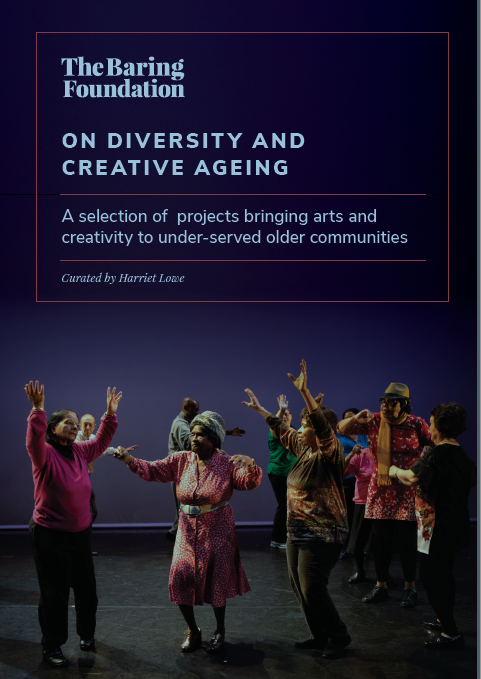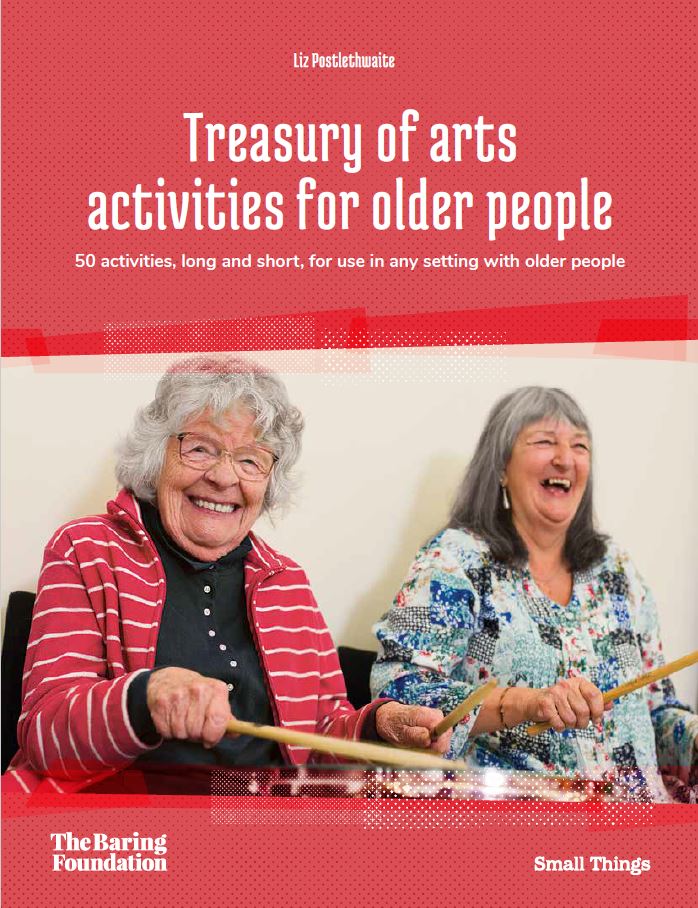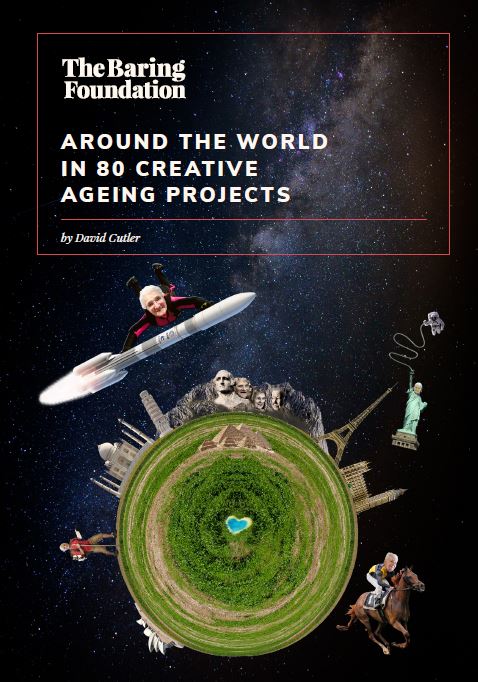A short collection of essays from practitioners in creative ageing about what a future agenda for the movement might look like.
Browse “Foundations”
Creative Aging: Drawing on the Arts to Enhance Healthy Aging
From the abstract:
The term “creative aging,” in the broadest sense, describes an aging policy idea that focuses on highlighting the creativity of older adults in order to prepare individuals and communities to manage old age. Programs focus on the evolution of creativity over the lifespan and aim to provide meaningful participatory engagement, especially through the arts.
Social Entrepreneurship and Social Innovation in Aging
From the abstract:
Social entrepreneurship is usually understood as an economic activity which focuses at social values, goals, and investments that generates surpluses for social entrepreneurs as individuals, groups, and startups who are working for the benefit of communities, instead of strictly focusing mainly at the financial profit, economic values, and the benefit generated for shareholders or owners. Social entrepreneurship combines the production of goods, services, and knowledge in order to achieve both social and economic goals and allow for solidarity building.
From a broader perspective, entities that are focused on social entrepreneurship are identified as parts of the social and solidarity economy. These are, for example, social enterprises, cooperatives, mutual organizations, self-help groups, charities, unions, fair trade companies, community enterprises, and time banks. Social innovation is a key element of social entrepreneurship.
Social innovation is usually understood as new strategies, concepts, products, services, and organizational forms that allow for the satisfaction of needs. Such innovations are created in particular in the contact areas of various sectors of the social system. For example, these are spaces between the public sector, the private sector, and civil society. These innovations not only allow the solving of problems but also extend possibilities for public action.
Alzheimer’s Foundation of America (AFA) Teal Room Community Classes
From the Alzheimer’s Foundation of America (AFA) Website:
AFA’s Teal Room Community Classes provides a variety of in-person therapeutic programs ranging from the creative arts therapies, Broadway singer performances, chair yoga, gardening classes, and more! AFA’s Teal Room Community Classes are always FREE and open to the public. These classes are a great option for anyone looking for dementia-friendly activities in New York City.
Classes are offered in-person at AFA’s Education and Resource Center in Manhattan, located at: 322 8th Ave, 7th floor, New York, NY 10001.
Unboxed: An Intergenerational LGBTQ+ Program Exploring Identity Through Art & Stories
This post on the website of LinkAGES, a Denver based foundation that supports intergenerational initiatives, provides an excellent overview of “Unboxed,” a digital intergenerational storytelling program for LGBTQ+ participants. Developed by the Denver Public Library in collaboration with the local branch of StoryCenter, the program brought together older LGBTQ+ adults with teens who also identified as LGBTQ+. Through learning about storytelling techniques from facilitators, who also identified as LGBTQ+, participants created and told their own life stories. The post includes testimony from one of the older participants that emphasizes the value of the program in building a cross-age LGBTQ+ community in Denver.
Older and Wiser? Creative Ageing in the UK 2010-2019
This review of The Baring Foundation’s decade-long funding for creative aging examines “how far has it come” and considers “where it should go next.” The report is an excellent overview of recent developments in cultural institution practices, cross-sector partnerships, local coalition building and age-friendly advocacy — developments that have influenced the emerging field of creative aging in the United Kingdom.
New Agency to Offer Support for Arts and Older People
This 2019 announcement from The Baring Foundation outlines a major new investment in creative aging in the form of a three year grant to launch a new national support agency. The announcement describes the background, rationale, and support structure for the agency to be housed at the Manchester Museum. It re-affirms the fundamental principle underlying The Baring Foundation’s Creative Aging funding which supports the statement, “the opportunity to be creative and to experience arts and culture is a right at any age.”

On diversity and creative ageing
This short report includes eleven case studies of creative ageing projects in the UK which set out to engage sections of the older population that are often under-served by arts and cultural organisations, including organisations working with older people from LGBTIQ communities and from ethnic minority communities.

Treasury of Arts Activities for Older People: Volume 1
From the report details:
A highly popular collection of 50 creative activities for use in any setting with older people. Contributed by arts organisations and artists across the UK.

Around the World in 80 Creative Ageing Projects
From the report details:
In the spirit of Phileas Fogg (who had open credit with Barings Bank), this book reveals 80 projects offering arts (of all forms) to older people from Europe, Asia, the US, Australia and New Zealand. Includes a set of travel itineraries to help you plan a creative ageing journey of your own. Also available in Chinese courtesy of the British Council.